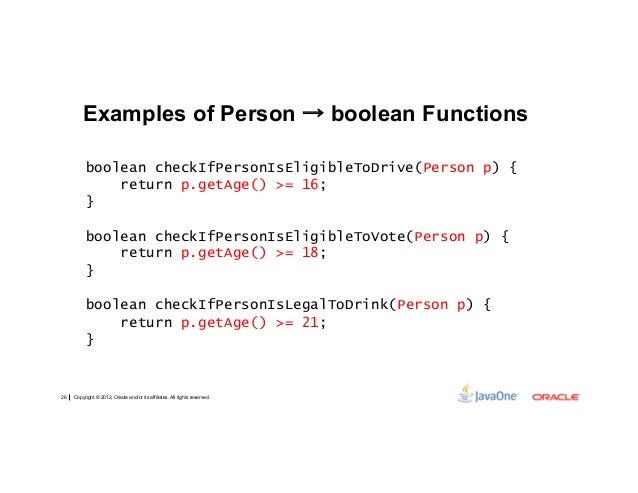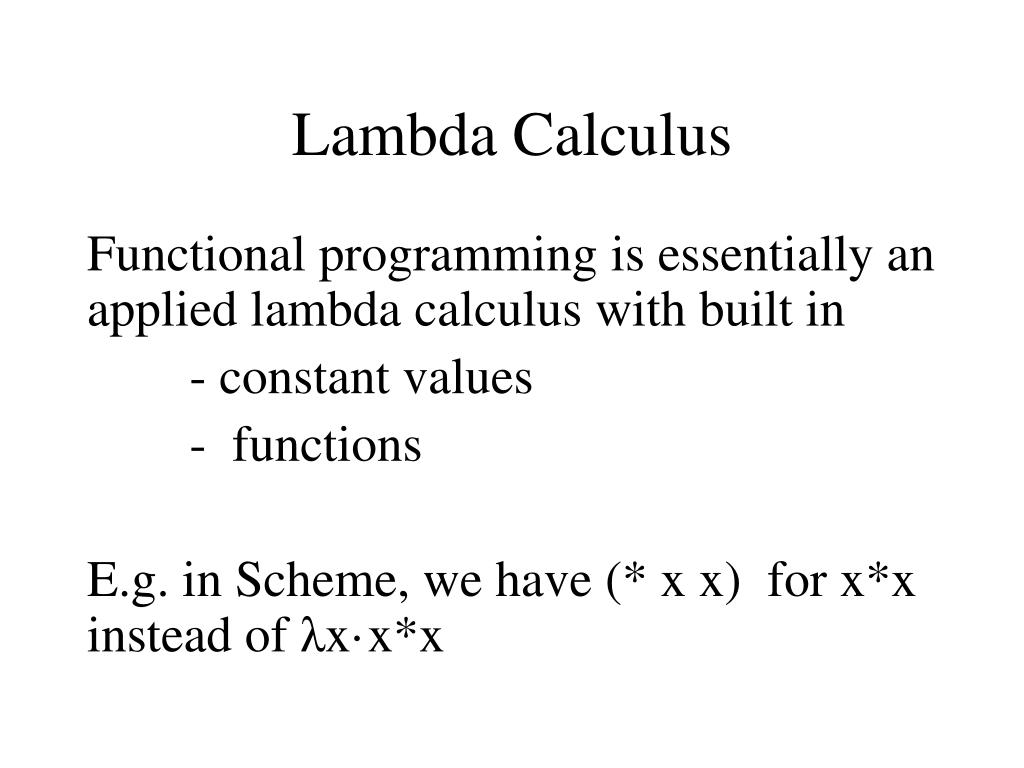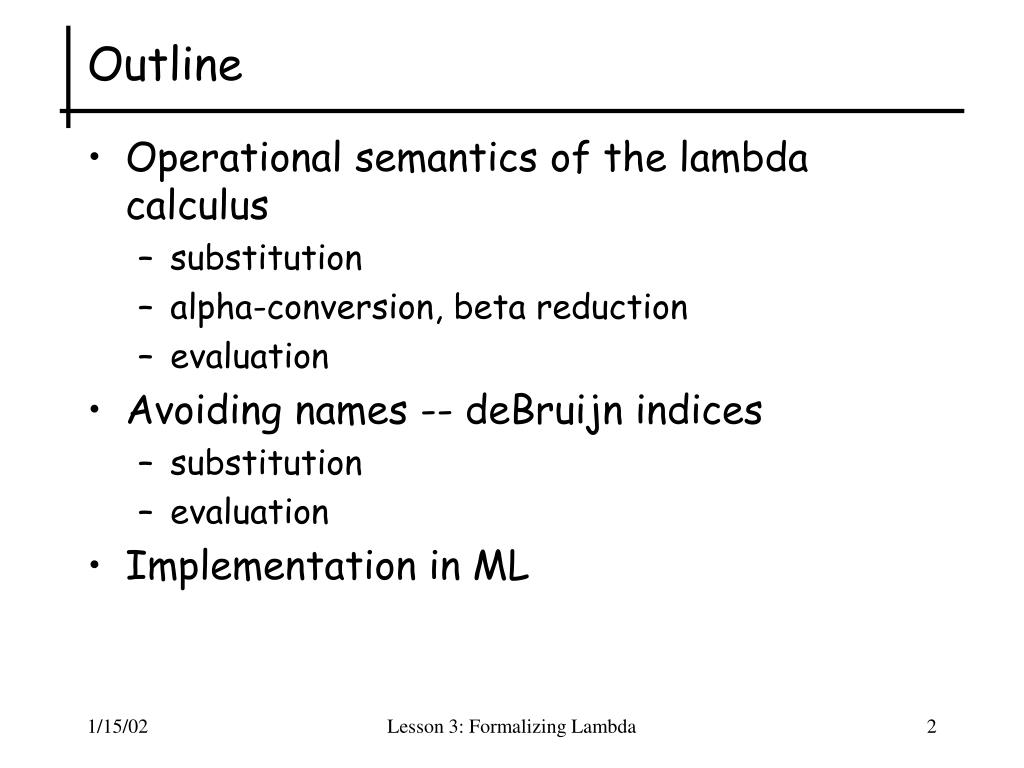
The difference is that in call-by-value you normalize the argument before you substitute it for the bound variable. The only reduction rule of interest in this course is called beta-reduction, and is dened by: (x. If both the - and -rules were used in reduction sequences, we would say an expression is in. Note that this is different from your examples bacause of the extra parantheses that I put in.Ĭall-by-name: (λpq.pqp)((λab.a)(λcd.d)) ➝Ĭall-by-value: (λpq.pqp)((λab.a)(λcd.d)) ➝ Here are a few examples of lambda calculus expressions. Congratulations, you just did your first -reduction Your first -reduction In this example, we are going to solve the boolean expression True or False using lambda calculus. In this case there is only one reducible expression, click on it. Finally, in 1960s, Dana Scott, then a Professor at Oxford University, and himself a former student of Alonzo Church, discovered a meaning for the lambda calculus.

Here is an example, where the difference matters. You can see that all the reducible expressions are highlighted. This explains why the lambda calculus has been called a calculus. In your case the call-by-value and call-by-name do not differ, because the arguments are already reduced. Call-by-value and call-by-name both use the same rules of reduction, but in different places and in a different order. The parallel reduction relation is defined as follows.You misunderstood call-by-value and are doing it backwards, i.e., you are substituting functions into arguments, instead of the other way around.

It maybetaughtinacomputabilitycourseasaclassical com-putationmodel.
#LAMBDA CALCULUS BETA REDUCTION EXAMPLES HOW TO#
Where downward lines are instances of -↠.Ĭonfluence is studied in many other kinds of rewrite systems besides the lambda calculus, and it is well known how to prove confluence in rewrite systems that enjoy the diamond property, a single-step version of confluence. x2 2) 22 4 Lambda Calculus Syntax and Semantics The syntax of a -calculus expression is as follows: e :: v v.

That is, if there are reduction sequences from any term L to two different terms M₁ and M₂, then there exist reduction sequences from those two terms to some common term N. we use the following -calculus syntax: (x.

In this chapter we prove that beta reduction is confluent, a property also known as Church-Rosser.


 0 kommentar(er)
0 kommentar(er)
